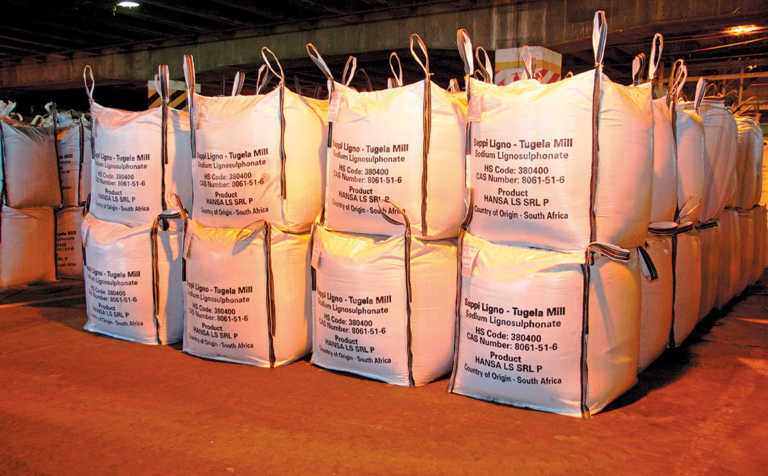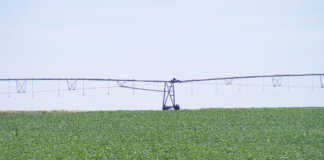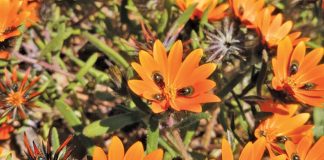
Photo: Courtesy of Sappi Limited
What are Sappi’s historical core business and markets?
In the 1990s and early 2000s, Sappi became a global business focused on manufacturing and marketing graphic, or printing, paper. With the rise of digital communications, international demand from this market segment began to stagnate.
In 2012, Sappi responded to this by beefing up its traditional (and the world’s largest) dissolving wood pulp (DWP) business through strategic investment and expansion in production capacity.
DWP is used by our international manufacturing clients in the areas of textiles, pharmaceuticals, and food applications. We already have about 20% global market share of supply, and it remains a strong long-term growth segment for Sappi.
Then, in 2015, Steve Binnie [Sappi CEO] launched Sappi’s Vision 2020, which entailed implementing a more diversified portfolio approach across the group. While producing graphic paper will still account for about 25% of our annual earnings, we also intend taking our knowledge of coated printing paper and applying this to producing high-quality coated packaging and speciality papers, for which global demand is growing.
We’ve been ramping up this section of our business to also ultimately contribute about 25% to our annual earnings.
Of the remaining 50% of annual income, the intention is to have DWP generate 40%, and for earnings from our new investments in biorefined products to contribute about 10% .
What is Sappi’s biotech business?
We began investing heavily in biotechnology research and production to meet increasing global demand for more natural, sustainable, and environmentally friendly products. The world’s middle-class income bracket is growing rapidly, especially in Asia, and these consumers want new types of products, as well as existing products with better quality.
In particular, these people are increasingly demanding the convenience of prepackaged, ready-to-eat meals and online shopping. Many of these products require specialised packaging materials that play to Sappi’s current and future strengths. Our biotech business is helping us to capitalise on these evolving consumer preferences.
We’re looking at opportunities to leverage our woody biomass as a raw material. We’re also focused on research on diversifying into what we call adjacencies.
These could be business opportunities where we already have some competencies to compete in a particular market segment, but we would have to develop other relevant competencies or find partners we can work with.
In the case of our business, we own the raw material and the front-end processes such as pulp mills that take the trees apart. This gives us access to feedstock such as lignin and hemicellulose. We then look at how we can respond to changing market needs by developing business opportunities in these adjacent product streams from wood.
Our research and collaboration with like-minded facilities around the world are focused on the renewable economy and its drivers, of which enhancing environmental sustainability is a core value among brand owners and consumers today. G
enerating more value from our tree resource is also a growth industry. Basic wood-derived cellulose, which is used to make paper pulp, can be used to produce packaging ranging from large boxes for fresh produce to small boxes for expensive perfumes.
Consumers increasingly want recyclable and biodegradable packaging made from renewable and sustainable raw materials coupled with biodegradable barrier coatings. So there’s a move away from the non-environmentally friendly and fossil fuels-based plastic that have traditionally been used to coat or line these boxes and other packaging.
What has Sappi been doing to diversify into biorefining?
It makes a lot of sense for us to develop projects that will convert much of our existing production assets and front-end processes around the world to the manufacture of biorefined, value-added products.
Sometimes, these can be used as is; at other times only a redesign or modification is required, followed by some additional downstream processes.
Where it’s necessary to invest in new product lines, we’ll begin by building add-on facilities to existing infrastructure, but ultimately we may also include new stand-alone facilities.
Where an existing facility is burning lignin and hemicellulose to cogenerate its own green electricity, we anticipate constructing an add-on to beneficiate these two raw materials, while benefitting from the synergies between the two adjoining facilities.
We see examples where we are unable to meet growing demand for these products, so it’s important that Sappi continues to grow to keep up with this demand. From a business perspective, this is a good position to be in.
What are some of the processes that Sappi uses to produce biobased products?
We extract lignin and hemicellulose from the raw woody biomass. Historically, this was mostly burned in our boilers to cogenerate some or all of the electricity required for our pulp mills. But now we’re developing downstream processes to increasingly utilise these two by-products to manufacture primary products for new markets.
The manner in which we’re doing this means we don’t lose the ability to cogenerate electricity from this renewable green feedstock.
Lignin has interesting dispersing and binding properties; it can be used as a dispersant in dyes and agrochemicals, and is placed in concrete mixes to improve the flow properties of concrete pumped from the ground to higher elevations in multi-storey structure construction.
Hemicellulose can be broken down into low-calorie xylose sugars. These can be used not only in the manufacture of products traditionally made from non-renewable crude oil, but to sweeten foods without negative effects, such as adding calories.
These xylitol sugar-sweetened foods are ideal for diabetics and for people wanting to control their weight. Interestingly, the xylitol that can be made from xylose sugars has been found to have antibacterial properties, making it useful in chewing gum and other health and hygiene products.
How far is Sappi with its move towards biorefining?
In terms of beneficiating lignin, we already have a commercial lignosulphonate business that manufactures 100 000t/ year of this product in South Africa and Europe. For other biorefined processes, we have three operational pilot and mini industrial plants producing trial products, and we’ll soon have another.
These plants are helping Sappi to verify the engineering designs and to better understand some of the technical issues that need solving. The products they are manufacturing are also being shown to our potential clients for feedback on where changes and improvements need to be made from our side. Once we’re satisfied with all of these aspects, we’ll be able to construct full-sized versions of the mini industrial plants.
What are the main markets for Sappi’s developing biorefined products range?
If we’re able to compete with current products, many of which are crude oil-based, we have the potential to enter markets globally. Demand trends for renewable and recyclable products tend to lead in the developed economies of Northern America, Europe and Japan, followed by the rest of the world.
In the case of many consumer goods, brand owners want ‘green’ features to promote demand in both developed and developing economies. Sappi can, or will be able to, provide raw, intermediate and finished biorefined products to customers.
Phone Louis Kruyshaar on 011 407 8236 or email him at [email protected]. Visit sappi.com.










